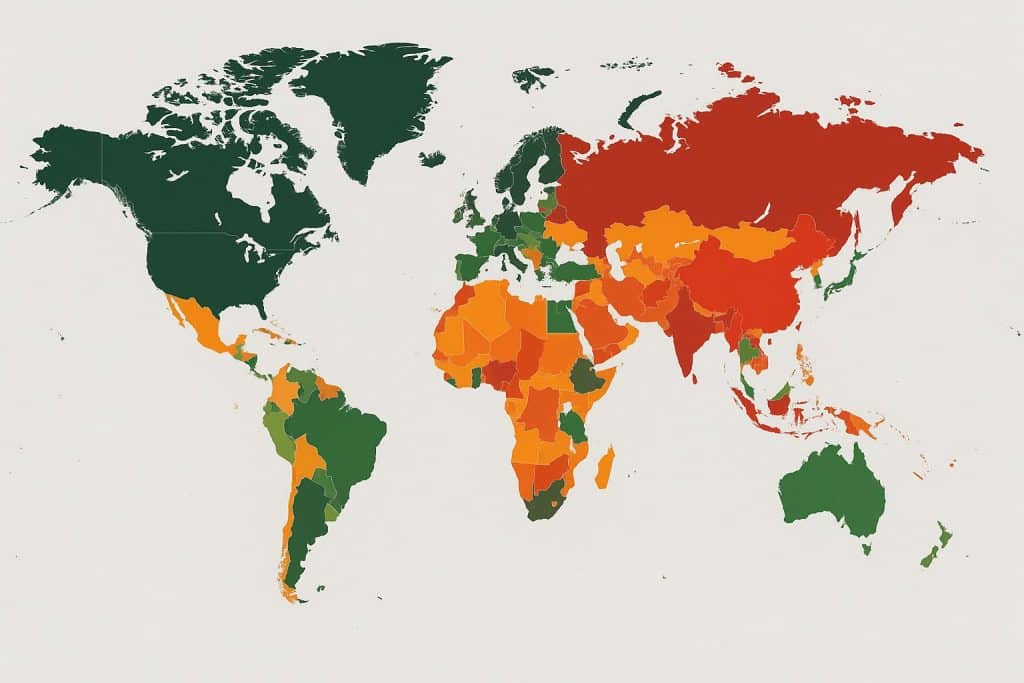There’s a red thread running through countries, languages, and time zones: watching major sporting events live. But “most watched” can mean different things: fandom (how many declare themselves fans), overall reach of an event (how many come into contact with it), average audience (how many follow at a given moment), and share (audience percentage within a single market). By combining these perspectives and the most reliable available data, a fairly clear hierarchy emerges—with important differences by region and format.
1) Football: the universal king
In terms of fandom, football is untouchable: 51% of the global population identifies as fans, far ahead of any other sport according to Nielsen Fan Insights 2024/25.
On big events, the gap widens: the FIFA World Cup 2022 reached 2.87 billion people who watched at least one minute on linear TV (2.21 billion for at least 20 minutes), while the overall ecosystem engaged around five billion fans—a historic record.
Even a “local” parameter like share confirms football’s gravitational pull: in Spain the final of the UEFA Champions League 2024 on La 1 achieved a 48.8% audience share, with over 6.1 million average viewers.
At multi-country tournaments (Euro 2024, Copa América) and Champions League finals, the global audience fluctuates depending on placements and TV markets, but always ranks among the top annual events.
2) Basketball: the widest growth (especially among youth)
Globally, basketball is the main challenger. Nielsen measures 42% global fandom, while a FIBA-commissioned study (Nielsen Sports) estimates over 3.3 billion fans aged 16–69 with strong growth among 16–29 year-olds. Definitions and baselines vary, but the trend is undeniable: basketball is growing, young, and urban.
3) Cricket: demographic giant and digital records
Cricket dominates in India and South Asia and produces staggering figures. The Cricket World Cup 2023 set a world record for streaming with 59 million simultaneous viewers on Disney+ Hotstar during the India–Australia final; in India alone, 518 million people watched the tournament on TV.
This explains why certain cricket matches generate “Super Bowl-level” peaks or higher, despite being geographically concentrated.
4) The Olympics: the event that unites everything
The Olympics are not a sport but a meta-event: at Paris 2024, 84% of the global potential audience, roughly five billion people, followed the Games according to independent research cited by the IOC. It is the quadrennial benchmark of reach and multi-platform engagement.
5) Formula 1: a global annual series
Formula 1 is the most global annual sports series for consistency of races and locations. In 2024 it totaled 1.6 billion cumulative TV viewers and 6.5 million on-site spectators (a record), confirming its cross-continental reach across Europe, the Americas, and Asia. By 2024/25 Nielsen estimated its fan base at ~827 million.
6) American football (NFL): domestic dominance, global echo
The Super Bowl LIX (2025) was the most-watched broadcast in U.S. television history with an average 127.7 million viewers (Nielsen official data). Globally its impact is significant but not as extended as European football or the World Cup; however, international expansion (Germany, UK, Mexico, Brazil from 2026) is expected to boost growth.
7) Rugby: record-breaking World Cups
The Rugby World Cup 2023 in France was the most-watched rugby event ever, with 1.33 billion hours consumed across TV and digital. In 2025, the Women’s Rugby World Cup in the UK peaked at 5.8 million on BBC for the final, proving the sport’s expanding audience.
8) Tennis: broad appeal and continuous seasonality
According to Nielsen, tennis fandom reached 33% globally in 2025, supported by four Grand Slams spread across the year and strong digital consumption (highlights, social media, late-night broadcasts across time zones). It doesn’t reach the peaks of mega-football events but compensates with consistency and cross-border appeal.
9) Baseball: regional giant with global windows
Baseball has a dual soul: MLB is dominant in the U.S. (World Series 2024: ~15–16 million average viewers, the highest since 2017), while the World Baseball Classic reignited international attention with record audiences in Japan and the U.S. in 2023.
Finally, when analyzing communities, media, and tools built around odds, markets, and statistics, from advanced analytics to discussions on bet online, it’s crucial to stay focused on data and context, without confusing reach, share, and fandom: only then can we avoid overstating (or understating) a sport’s true “popularity.”
